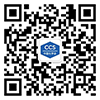FACS PROJECTS
- Term of Reference
- List of Projects 2013-2015
- List of Projects 2010-2011
- ACEN (Asian Chemical Education Network)
- ANAC (Asian Network of Analytical Chemistry)
- ANEC (Asian Network of Environmental Chemistry)
- APFAN (Asian Pacific Food Analysis Network)
- ANRAP (Asian Network of Research on Anti-diabetic Plants)
- ChIN (Asian Chemical Information Network)
- GC (Green Chemistry)
- LCI-MSC (Low-Cost Instrumentation and Microscale Chemistry)
- NPMC (Natural Product and Medicinal Chemistry Network)
- HA (History and Archives)
- ANMC(Sub-Project, Asian Network of Metallic Chemistry)
- List of Projects 2008-2009
- Asian Network of Analytical Chemistry (ANAC)
- Asian Chemical Education Network (ACEN)
- Asian Chemical Information Network (ChIN)
- Asian Network for Environmental Chemistry (ANEC)
- Asia Pacific Network for Food Analysis (APFAN)
- Green Chemistry (GC)
- Medicinal Chemistry and Natural Products (MCNP)
- Asian Network for Research on Anti-diabetic Plants (ANRAP)
- Low-Cost Instrumentation-Microscale Chemistry (LCI-MSC)
- History and Archives of FACS (ARCHIVE)
- Project Reports and Announcements
- Application for FACS Projects in 2004-2005
- Asian Coordinating Groups for Chemistry (ACGC)
- About ACGC
- Minutes of ACGC Meetings
- The Conference: ASOMPS
- Related Meetings
- The Journal: ACGC CRC
Reports of Individual Member Organisations
发布时间:2016年05月05日 来源:中国化学会
1. Report from NEPAL
Prof Mangala Manandhar reported on the difficult situation for chemistry in Nepal especially the lack of equipment, books and journals. She reported on the NITUB workshop for repairing pH meters, spectrophotometers and electronic balances as well as a workshop on phytochemistry. She requested assistance in obtaining medium-scale scientific equipment.
John Webb referred to the Organisation for the Prohibition of Chemical Weapons (OPCW) which has a program to cover the costs of equipment transfer. Hitoshi Ohtaki referred to the Organisation of the Development of Chemistry and Chemical Technology in Asia. This has Japanese funding and is linked to the Chulabhorn Institute in Bangkok and includes the transfer of equipment within its activities.
2. UNESCO JAKARTA
Dr.Minella Alarcon reported that her office includes the Regional Network for the Chemistry of Natural Products and the ACGC within its Workplan. Recent activities included:
1997 exchange visits: 6 ( chemists from Vietnam, Korea, China and Philippines)
travel grants: 5
national activity: 1 (Philippines)
1998 Headquarters of the Network moved to University of Philippines, Diliman
ASOMPS IX
exchange visits: 2 )Korea, Indonesia)
travel grants for ASOMPS IX: 25
workshop on bioassays (Philippines)
conference grants: 2 ( Vietnam, $20000 for ASOMPS IX and $5000 for Analytical Chemistry Conference in Ho Chi Minh City).
Inter-Network meeting of Chemistry and Microbiology Networks as joint activity ( Korea)
Dr. Alarcon reported on the planning of the World Congress on Science, scheduled for October 1999 as well as a Regional Conference in December 1998 sponsored by the Australian and New Zealand UNESCO National Commissions. The themes of these two meetings are broad, science in general, including science policy, science education, women and science, science in less developed and small nations, science and ethics. The regional National Commissions have received invitations.
3. Regional Network for the Chemistry of Natural Prducts in Southeast Asia
The Executive Secretary, Dr. Amelia Guevara reported that the Network had set up an Internet Home Page. The Newsletter will be published in December 1998 and a Board meeting will be held in early October 1998.
4. ASOMPS IX
Prof Ho Van Phiet reported on ASOMPS IX.
delegates: 337 with 135 foreign and 202 Vietnamese
support: 22 delegates by Unesco and 5 by the International Foundation for Science (IFS)
papers: 12 plenary, 18 session, 70 oral, 150 posters
Prof Jack Cannon requested clarification on the registration fees for local scientists and for visitors. The Local registration fee was zero.
Dr. Lutz Baehr commented on the value of the Open Forum at ASOMPS IX and expressed the hope that it would be included in the report of ASOMPS IX.
5. ASOMPS X 19-23 November 2000, Dhaka, Bangladesh.
Prof Mosihuzzaman made a presentation, including OHP slides, on the planning, administrative arrangements and status of ASOMPS X. He noted that Secretaries of 5 Government Departments are on planning committees. The Convenor is the Secretary, Ministry of Science and Technology. He referred to Prof Nilufar Nahar's role in ASOMPS and provided two email addresses for communication:
asompsx@bangla.net or zamanmm@bangla.net
6. International Foundation for Science
Prof Rune Liminga referred to Attachments 4 and 5 from the last ACGC meeting's papers. He provided an update on both IFS and IPS (Uppsala) including the possibility of increased funding for IPS from SAREC. It was suggested that IFS Grantees could be identified in the scientific programme of ASOMPS.
Prof Mosihuzzaman moved a vote of thanks to Prof Liminga for his contributions over many years to the development of scientific capacity building in developing countries. This was carried by acclamation.
7. UN FOUNDATION
Dr. Lutz Baehr reported on the opportunity to raise funding through the UN Foundation which began in Spring of 1998 as an instrument to support activities of UN organisations such as UNESCO. Applications need to follow the appropriate format and the priorities are: global environment; gender and population issues; strengthening of scientific capacity. Funds are generally for less then $3M and require innovative thinking. Dr. Alarcon agreed to follow up this opportunity. Dr. Baehr commented on the need for the World Science Congress to review and give direction on the role of the UN for science and technology in developing countries. Associations such as ACGC have a crucial role in providing advice and inputs.
On the recommendation of Prof Cannon, ACGC issued Dr. Baehr a standing invitation to attend future meetings of ACGC and ASOMPS.
8. ANRAP
Prof Mosihuzzaman presented a report on the activities of the ANRAP Network.
9. NITUB
Prof Nilufar Nahar presented a report on the activities of the NITUB Network. Prof Nahar stressed the 'hands-on' approach to Workshops on repair and maintenance, recognised by UNESCO as essential for sustainability.
10. Commonwealth Science Council
Dr. Noller introduced this topic, referring to the increased priority for science in the Commonwealth Secretariat. Dr. Singh reported that the CSC Project, Chemical Research for Environmental Needs (CREN) now has 'flagship;' status, following an internal review of CSC programmes.
11. COSTED
Dr. Noller reported in general terms regarding the activities of COSTED, such as travel grants (to attend ASOMPS) and support for guest speakers.
12. IUPAC
Professor Ohtaki reported on the recent 71st Bureau meting held in Frankfurt, Germany. All existing commissions are to change at the end of 2000. The Secretariat has moved, for at least 10 years, from Oxford, UK to North Carolina, USA. Discussions concerned fees (US$1000 minimum), voting rights and membership.
13. EURASIA
Prof Ohtaki reported on the historical background and the aims of the series of Eurasia Chemistry Congresses. The next Eurasia will be hosted by the Insitut Kimia Brunei Darussalam in late February 2000. Prof Webb is the international coordinator.
14. FACS
Professor Ohtaki made a general presentation on the Hiroshima Conference. The next will be held in Taiwan, November 21-24, 1999. A draft programme had been provided by Dr. Johnsee Lee but extra suggestions are welcome. Support for young researchers is anticipated. Dr. Noller referred to the posting of information and programs of FACS on the Internet.
15. IUPAC/ACC-2001 (Brisbane)
Dr. Mary Garson reported on the planning and status of this large conference. The meeting agreed with the need to showcase ACC to the rest of the world through this joint activity with IUPAC, The preferred plan was to integrate ACC scientific lectures with the IUPAC programme rather than separate it out from IUPAC.
16. ANAIC
Prof Webb provided a report on the activities of the ANAIC Network. Dr. Singh commented on the role of analytical chemistry as a core area of Network interests and proposed the collection of information from each society for conferences and training programs in key areas such as IT. The challenge of instrument maintenance and repair received strong support. The 'first come, first served' aspect of UNESCO funding requests meant that activities in this area require strong priority requests from ACGC and FACS. Dr. Singh suggested approaches to manufacturers.
17. Women's Refuge Project
Dr. Noller reported briefly on this project in which Prof. Sane is involved.
18. Book on Traditional and Folk Medicine
Professor Han (Korea) reported on the status of the project to produce the book: International Collection of Traditional and Folk Medicine. Northeast Asia Edition.
19. BOTANY 2000
Dr. Neville Marchant presented his report. Discussion concerned the possible extension of activities to include also seaweeds and marine algae. Prof Webb suggested Mrs Bouakhaykhone of National University of Laos as a contact person in that country. Dr. Soundara agreed to pass on Botany 2000 materials to her.


